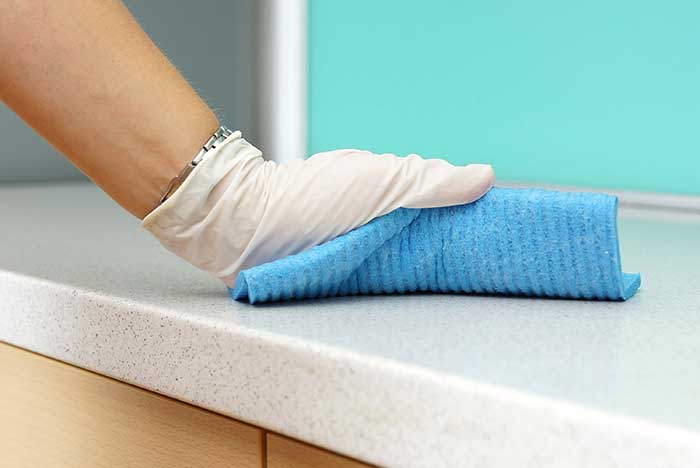Scratching the surface of infection prevention

Linda Lybert, president of Seattle area-based Healthcare Surface Consulting, is on a mission. She wants to help reduce deaths due to health care-associated infections (HAIs) by getting hospitals to pay more attention to an often-underappreciated source of potential disease transmission — environment of care surfaces.

|
2017 Trends: Infection prevention |
| Next: CDC surface safety research |
|
|
Specifically, Lybert wants hospital facilities and environmental services leaders, researchers and scientists to pay closer attention to the role surfaces play in harboring dangerous bacteria that can lead to HAIs.
“One of my frustrations is that people do not understand that surfaces are an issue. My crusade has really been that we need to pay attention to this,” Lybert says.
A growing number of those in the research and scientific communities are studying exactly what Lybert suggests. The Centers for Disease Control and Prevention’s HAI Prevention Epicenters program, the University of Chicago Hospital Microbiome Project and numerous other hospital- and manufacturer-based research studies are focused on answering many of the questions that have been raised about the role of surfaces in disease transmission. Others are examining the impact that copper, which has natural antimicrobial properties, can have on reducing bioload on patient care area surfaces. Still others are employing various forms of ultraviolet light technology to supplement terminal cleaning protocols to improve disinfection practices.
This report will take you through some of these projects. What you’ll see is that while many important questions remain about the possible link between environmental surfaces and HAIs, the base of knowledge is expanding rapidly.
And as the base of research knowledge from hospital-based studies keeps growing, there could soon be more proven solutions for designing, building and maintaining safer care environments.


